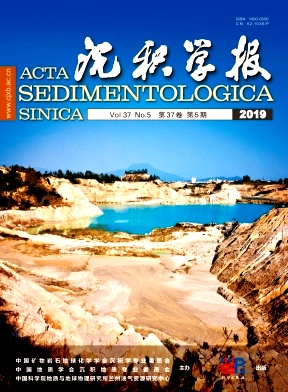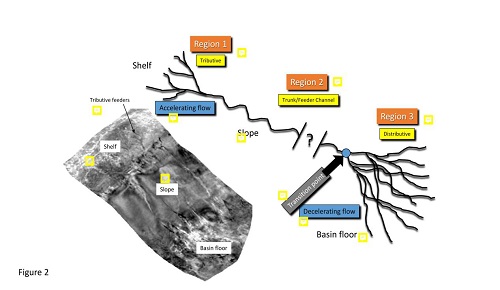An Overview of Deep-water Turbidite Deposition
doi: 10.14027/j.issn.1000-0550.2019.049
- Received Date: 2019-02-10
- Rev Recd Date: 2019-06-26
- Publish Date: 2019-10-10
-
Key words:
- turbidity current /
- deep-water gravity flow /
- tributive canyon /
- feeder channel complex /
- levee /
- distributive channel /
- terminal fan /
- overview
Abstract: Deep-water turbidites commonly are deposited in water depths below storm wave base. These depths range from a few tens of meters to thousands of meters. Turbidite systems tend to be most active when depocenters lie at or near shelf margins,and this proximity of depocenters to shelf margins tends to be associated most commonly with times of relative sea level lowstand. Deep water depositional episodes can be divided into early and late lowstand time. Deposition during early lowstand is characterized by progressively larger and more frequent flow events,whereas deposition during late lowstand is characterized by progressively smaller and less frequent flow events. Consequently,during early lowstand time,erosion of channels tends to dominate such that channels tend to become progressively deeper with minimal preservation of deposits within feeder channels;successive flows are overfit. Subsequently during late lowstand progressively smaller flows tend to be underfit resulting in preservation of channel fill deposits. Turbidite systems tend to be characterized by three discrete regions:Region 1 corresponds to the most proximal reaches of turbidite systems dominated by canyons that commonly are tributive. Region 2 corresponds to that part of the turbidite system characterized by a single feeder channel complex that was characterized by flows with heights greater than confining walls,hence associated with levees. Region 3 corresponds to that part of the system distally, that is characterized by frequent avulsions and sand-prone overbank as well as channel-fill deposits,which can be described geomorphologically as a terminal fan. From a process perspective,Region 3 can be described as a frontal splay. From a sequence stratigraphic perspective,lowstand deposits commonly are bracketed by mud prone distal highstand and transgressive systems tract deposits. The succession of early to late lowstand deposition commonly is characterized by sand-rich Region 3 fan deposits overlain by leveed channel deposits of region 2.
| Citation: | Henry W. Posamentier, Venkatarathnam Kolla, LIU HuaQing. An Overview of Deep-water Turbidite Deposition[J]. Acta Sedimentologica Sinica, 2019, 37(5): 879-903. doi: 10.14027/j.issn.1000-0550.2019.049 |







 DownLoad:
DownLoad: